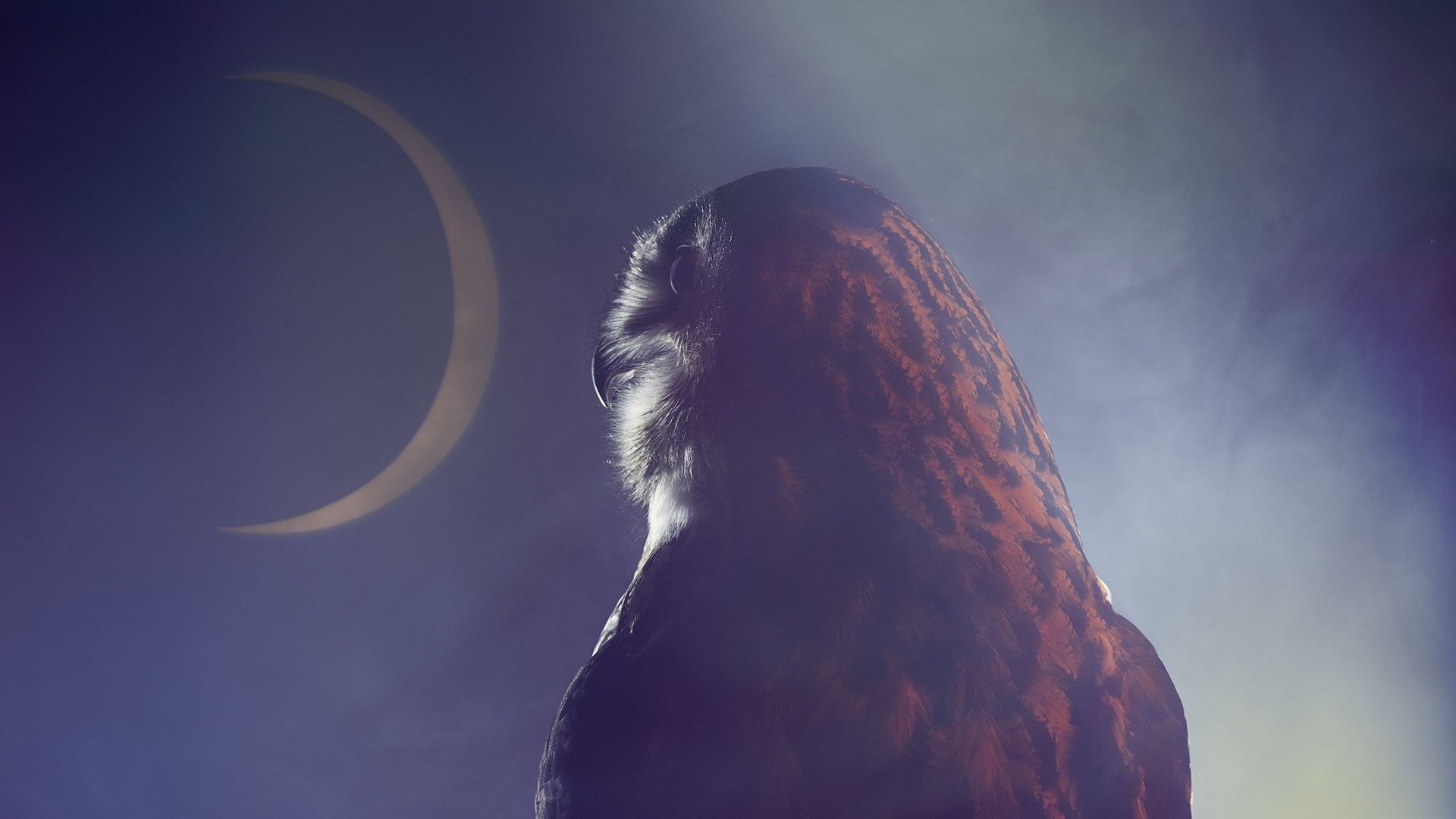There is horror in Val Lewton’s Curse of the Cat People (1944), his sixth feature for RKO Pictures, but it isn’t horror of the kind suggested by the schlocky, B-movie title. The title wasn’t his. Lewton was given three rules when, after an apprenticeship that led him from writing pulp and pornographic novels to a stint as assistant to David Selznick, he was placed in charge of the horror unit at RKO. He had to make his films cheaply, costing less than $150,000; he had to keep them short, less than seventy-five minutes; and he had to make whatever he could out of the material suggested by the titles the studio supplied him. What Lewton made—through thrift, shrewd choices in collaborators, and his own remarkable gifts—was a body of work unlike anything else I know in American commercial movies: quiet, ruminative films that both honor and transcend their genres and that in their best moments attain, within the narrative propulsion of motion pictures, something like the stillness and temporal suspension of poems. Lewton has had his champions, from James Agee and Manuel Puig to Martin Scorsese, but his reputation has always lagged behind his accomplishment. Of the fourteen films he made before dying of a heart attack at forty-six—the last five years of his life, after he left RKO, were frustrated by intrusive studio executives and largely unproductive—several are currently unavailable on DVD or streaming services, though a beautiful print of Curse was released on Blu-ray in June. Lewton refused a screenwriting credit on all but one of his RKO films (even there using a pseudonym), but he rigorously reworked every screenplay he produced, and insisted on writing the shooting scripts himself. In saying that his films are like poems, I mean primarily three things. First, that his screenplays have moments in which characters’ lines depart both from narrative circumstance and from the textures of spoken language, attaining a lyric strangeness. (“I don’t hate the storm,” a senile actress intones in Curse, “it blows beyond me.”) Second, Lewton invests non-narrative elements—a street singer’s song, a mute sailor’s pockmarked face, a boy painted all in gold—with a density of meaning wildly disproportionate to the amount of screen time they’re given, creating what the critic Alexander Nemerov has called “icons of grief.” And third, Lewton has a tolerance for mystery and non sequitur unusual in commercial film, a willingness to present situations without etiology or explanation, interrupting narrative syntax in a way that creates space for images and lyrical language to resonate with uncanny force. Taken together, these elements give his films a weird, compelling off-kilterness, a sense of significance hoarded in ways that flout storytelling convention. Lewton’s assignment, in Curse of the Cat People, was to write a sequel to his first, hit film for RKO, Cat People (1942). In the earlier film, which starred Simone Simon as Irena Dubrovna, a Serbian woman doomed to transform into a panther and kill any man she loves, one feels Lewton struggling with the conventions of genre, deferring and deflecting the violence and supernatural shock the film is obligated to deliver. In Curse of the Cat People, he abandons those conventions almost entirely. The main story line centers on the relationship between Amy, a lonely, distracted six-year-old, and her father, Oliver, the “good plain Americano” who married Irena in Cat People only to find that his American lightness couldn’t conquer her sense of ancestral European dark. The film’s claim to being a sequel lies in the presence of Simone Simon, though it doesn’t clearly establish whether she’s Irena’s ghost or an imaginary companion Amy invents after finding Irena’s photo in a drawer. Oliver fears that his daughter’s daydreams and solitude are symptoms, as they were in Irena, of some deeper malaise, “something moody, something sickly,” and he tries to force her to relinquish her childish fantasies and games. In doing so he delivers a variation on Lewton’s central theme, and provides the deepest source of horror in Curse: the quotidian tyranny of normalcy and health and our utter intolerance of anything that won’t assimilate to them. What might have been a sentimental story is saved by two things: Ann Carter’s extraordinary gravity and sweetness in the role of Amy, and the counterpoint of a much more mysterious rhyming narrative that runs like a brackish underground spring clouding otherwise clear water. One day, trying to obey her father’s command that she play with other children, Amy comes upon a large and antiquated house, in which she meets Mrs. Farren, an old, imperious actress who takes a liking to Amy, giving her a ring (the wishing ring she will use to summon Irena) and entertaining her with stories. The house is a collection of clichés, all opening doors and looming staircases and ominous taxidermy, sly winks toward the horror movie we’re supposed to be watching. Mrs. Farren, played by the stage and silent-film actress Julia Dean, moves with a tottering, Victorian elegance, her limbs not quite harmonized, everything from her dress to her accent the exact opposite of the suburban Tarrytown where the film takes place. Even more compelling is the hovering, mostly silent figure of Barbara, the film’s most frightening and magnetic character, whom Mrs. Farren refuses to recognize as her daughter. “That woman is an impostor,” she says, insisting that the real Barbara died as a child. Barbara is played by Elizabeth Russell, whose minor, otherwise undistinguished career included small roles in five Lewton films and at least three great performances, none of them consisting of more than a few moments on screen. Her greatest lasts only a few seconds, when she appears in Cat People as a woman who confronts Irena in a Serbian café, her face gaunt and severe as she addresses Irena as sestra, sister. In Curse she appears first as an angular, almost skeletal hand, reaching into the frame to snatch a handkerchief Amy has picked up, and she remains a figure of menace as she watches her mother pour affection on the stranger. “Look at me,” she demands after Amy leaves, repeating the command with greater and greater despair as Mrs. Farren refuses to acknowledge her. Mrs. Farren’s rejection of Barbara, which is never explained, and her sense that Barbara is a tormentor and spy, is the film’s nightmare version of the conflict between parent and child, and Barbara’s despair—the strongest and darkest emotion in the film—makes clear the stakes of that conflict. The film’s climax finds Amy again in the Farren household, this time on a stormy winter night. Mrs. Farren, wanting to hide her from Barbara, tries to climb the stairs, where she collapses from the effort, still holding Amy’s hand. “Even my mother’s last moment you’ve stolen from me,” Barbara says to Amy, her voice eerily calm, her eyes grief-stricken and enraged. Frightened, Amy twists her ring and calls for her friend, then approaches Barbara, seeing Irena’s face superimposed on her. “My friend,” she says, and the hands Barbara has tensed to do her harm relax. Only then do Amy’s frantic parents arrive, bearing superfluous rescue; they take her away, leaving Barbara alone with her mother’s body. A final scene finds Amy at home, and the film ends with as much happiness as any of Lewton’s films manage, which is to say happiness of a decidedly mixed kind: Amy is cradled in Oliver’s arms as Irena fades away, reconciliation accompanied by loss. But I can’t help feeling that there’s something pallid in this happy ending, that the film is more invested in the more powerfully charged scene that precedes it, which refuses any recuperation by what the Russian-born Lewton called in one of his novels “the American code of light-heartedness.” There’s an un-American finality in Barbara’s grief, a sense that her mother’s death has made both grief and grievance unredeemable. Hollywood convention required that a movie about a child end with consolation. The power of Lewton’s film lies in its allegiance to the unconsoled.
我們將進行通訊系統升級,請在此登記Aesop香港官方WhatsApp,以保障資料安全並享個人化服務。了解更多
購物車
容量
數量
我們提供產品寄送服務範圍包括中國香港特別行政區與中國澳門特別行政區。
所有價格均以港幣計算
小計


